The weather of the Alps doesn’t necessarily play by the rules. Long range forecasts are dodgy, areas in close proximity are extremely variable and rain showers (depending on where you are) are not unusual. Troy Haines, Alpinehikers owner and founder, and I recently sat down to discuss the complexities of weather when traveling by foot through the Alps.
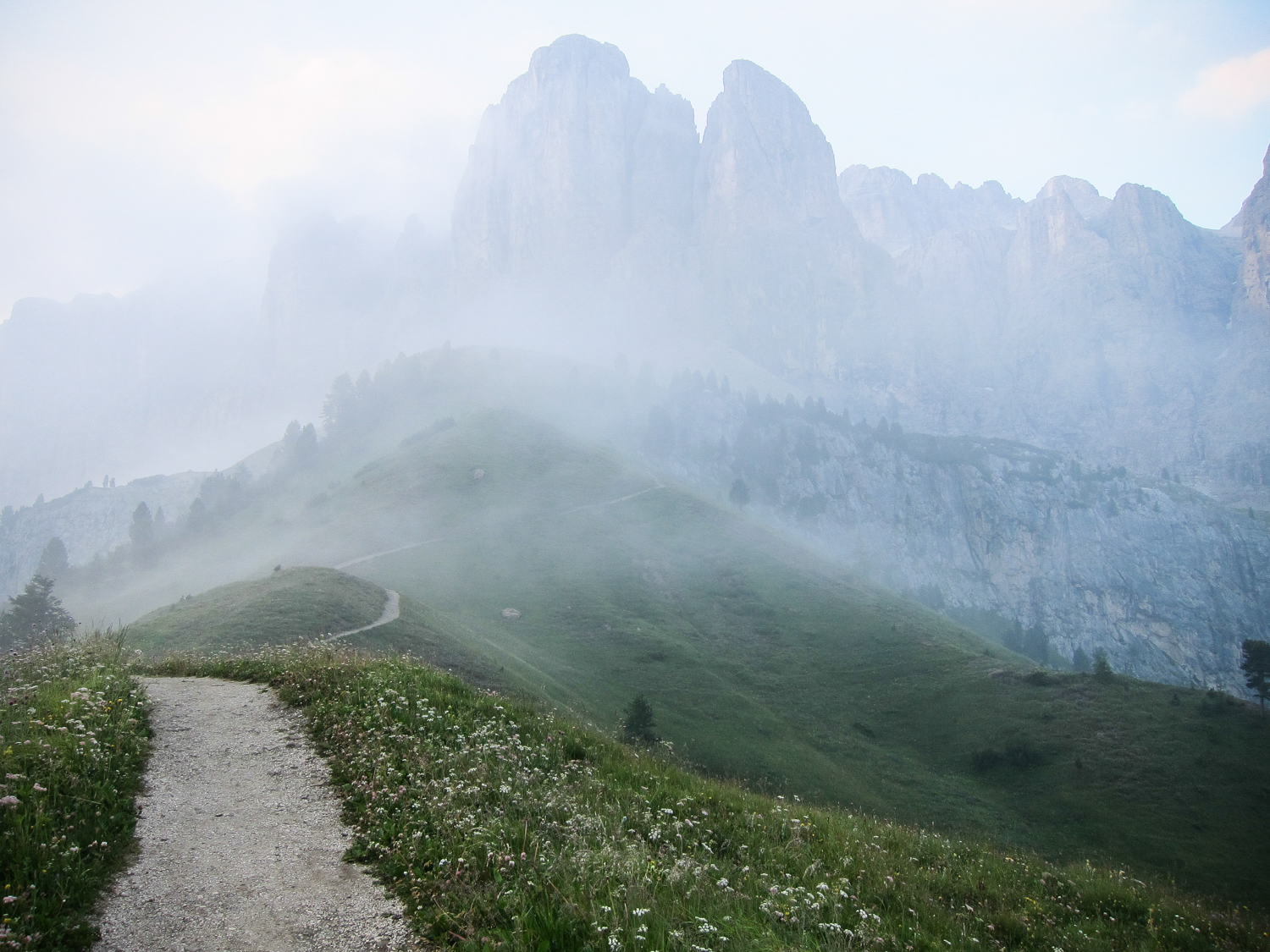
Eryka: How long have you been hiking and dealing with the weather in the Alps?
Troy: I first moved to Switzerland in 1997. I lived in Mürren year-round for 2 years, hiking all summer and snowboarding in the winter, and have been back every summer since. For many years, I guided every tour, so I’ve been out in just about every kind of weather you can imagine… sun, rain, lightning, snow. I love beautiful days, just like everyone does, but some of my most memorable experiences were hikes through heavy wind or rain. It can be very dramatic.
Eryka: What makes weather in Switzerland so unique?
Troy: Switzerland weather usually blows in from the northwest. When it reaches Switzerland, this is the first time that it meets mountains and like in a lot of places around the world, this elevational uplift can drop a lot of moisture. This is why certain areas are drier than others. For example, Chamonix and the Bernese Oberland are wetter and greener with more waterfalls because they are on the wet side of the mountains. If you head to the other side of the Alps or further south or east, Courmayeur, Zermatt and places along the Haute Route are much drier as the moisture has already been dropped. Often you will see rain in the Bernese Oberland and sun in the Valais.

Eryka: Is there such a thing as a a typical summer day in Alps?
Troy: A most typical day in the Alps is mixed with some sun, some clouds and maybe some showers. You may see a forecast of rain, but it doesn’t mean it’s going to rain all day. It might, but it also might not show up until you’re back in your hotel at the end of a hike. Or you could have one of those wonderful days with clouds, some mist and some surprisingly beautiful clearings throughout the day. It’s a shame that weather forecasts are so binary and often scare people. A forecast for rain might be technically true – it did rain that day – but it doesn’t accurately reflect what the day is really like. Even if it does rain on a hike there are usually plenty of clearings and dry spells, and it’s not raining all day.
Well, except for the times that it does….
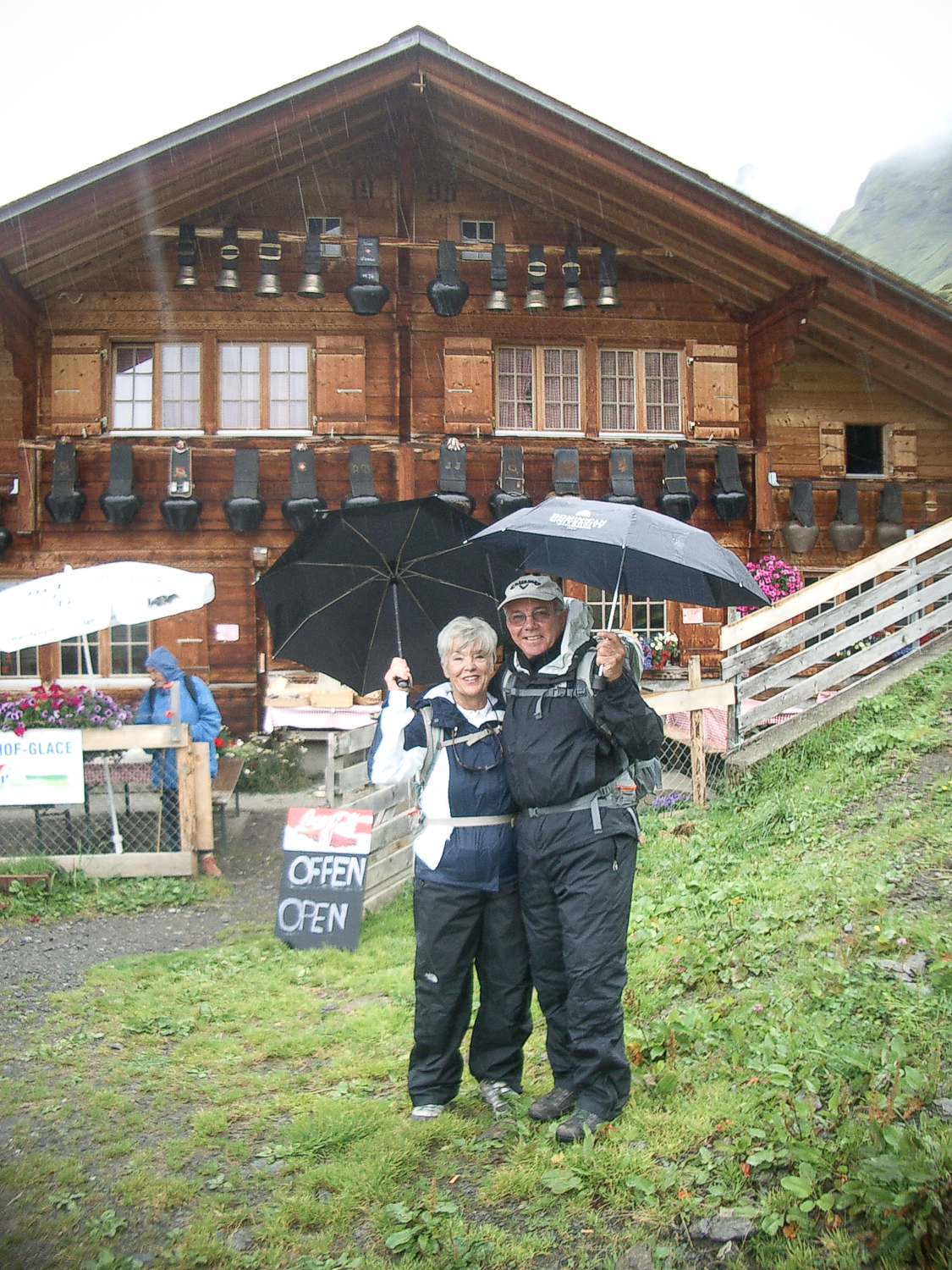
Eryka: You say you might even see snow in the summer?
Troy: Yes, summer trips will very often be sunny and warm but it can definitely be cold, and you can even find yourself in a snowstorm. Crossing a high pass like Sefinenfurgge near Mürren in the middle of July, you could have a sunny day grass underfoot, or you could be crossing through fresh snow and a swirling snowstorm (or you could be skipping the pass instead). These extremes are very possible. My advice is to embrace the uncertainty and bring clothes to be comfortable in whatever weather. Rain and clouds move your focus to the flowers and waterfalls, and snow is often stunningly pretty. It can and does snow as low as about 5,000 feet every single summer at some point. And of course if it’s snowing in Murren (5400 feet), it could easily be dropping 8 inches or more higher up on a pass. It probably won’t snow on your summer trip to the Alps but if it does… it’s not so unusual.

Eryka: What’s your go to weather source in the Alps?
Troy: I like meteoswiss.ch which will give a much more detailed analysis. You can type in Zermatt or Grindelwald and get detailed local info. It displays different images with clouds and other icons so that you can see the trends every 3 hours giving you a better sense of what is going on throughout the day. I would just pay attention to today, or maybe 1 or 2 days out, since extended forecasts are very often wrong anyway.
Eryka: What’s the challenge with a more detailed forecast for the Alps?
Troy: So many of the big general pages like weather.com will put out a 10-15 day forecast when in reality they have no idea. I don’t even know why sites post something that is more than 4-5 days in the Alps. They are pretty good with today and tomorrow, but once they get out to 5-6 days in the future it’s more than likely going to change. I would say at least half the time it’s wrong. On top of that, it is not unusual for these sites to use incorrect weather data, taking data from Jungfraujoch (11371 feet) and showing it as data for Grindelwald (3392 feet).
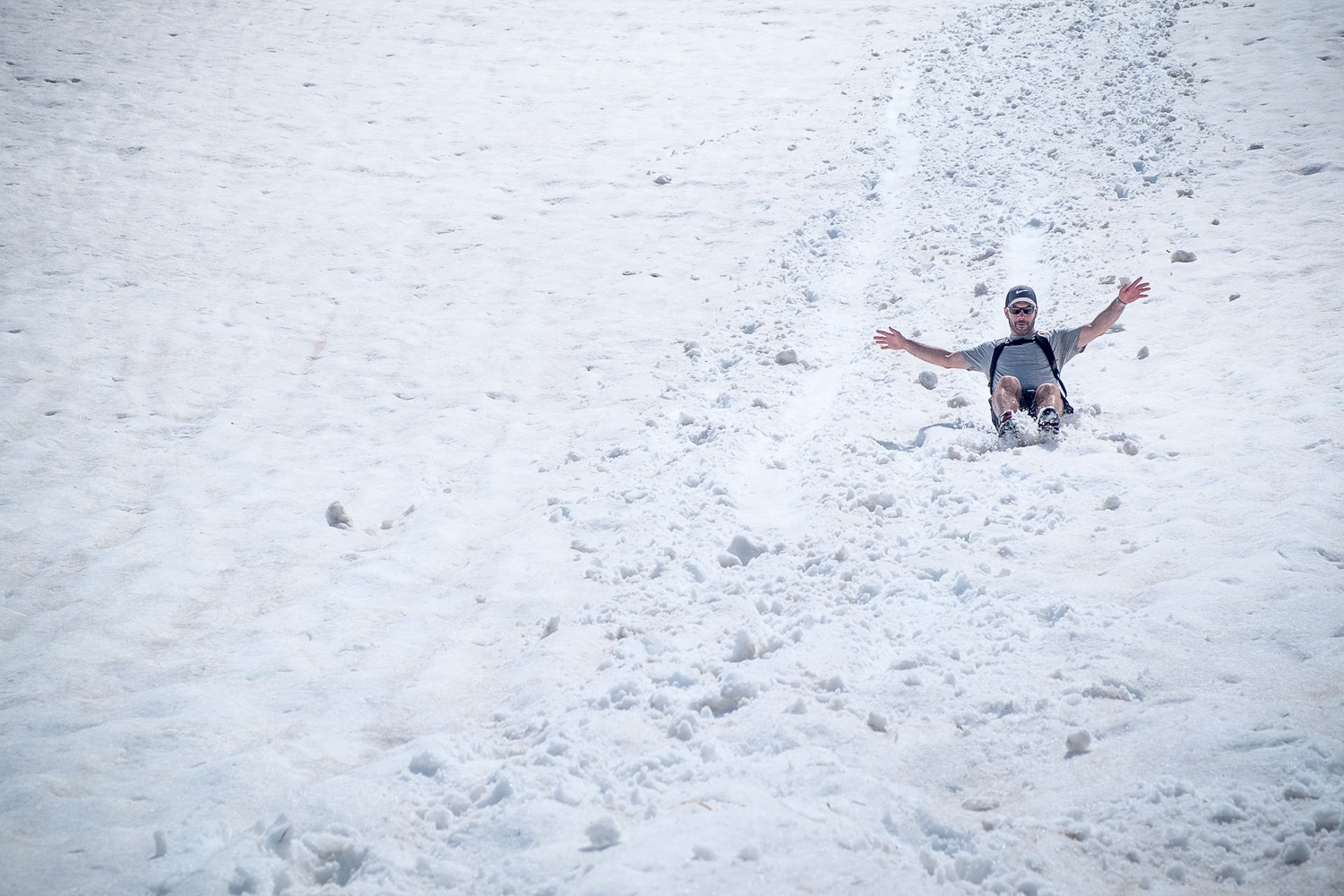
Eryka: Why is it so difficult to forecast weather in the Alps?
Troy: I just think there is huge variability in temperature and precipitation when you take into account elevation and topography. It could be raining at the base of a mountain but clear 2 miles away. Elevation is especially important because for every 1,000 feet in elevation gain, temperature drops 3-5 degrees Fahrenheit. Interlaken is only 7 miles from Mürren but its weather is radically different. Mürren sits over 3,500 feet higher than Interlaken so it is much cooler. Mürren is also closely rimmed in mountains which create specific local weather effects.
Eryka: Do you have a favorite month for hiking in the Alps?
Troy: There really isn’t a bad summer month to be in the Alps – every month has its highlights. I love the long days and the wildflowers and waterfalls of May and June. Typically there is still a lot of leftover snow, and high trails can be closed because of that, but the lower valleys are spectacular. July and August are a great time for hiking in the Alps, high season, and this is when you often have more humidity and afternoon thunderstorms. September is perhaps my favorite time to be in the Alps. It’s typically cooler and the days are noticeably shorter, but, because it’s drier in September, sunny days can be the most crystal clear days of the year. On these days the mountains look so close that you could just reach out and touch them.
If you’d like very detailed info on local climate… sunny days vs cloudy vs rainy days, maximum temps, number of days with a light rain vs heavy rain, then meteoblue is a great and detailed resource for that, with lots of charts. These aren’t forecasts, but are historical averages that can help inform you on what it’s normally like there.
- Meteoblue Dolomites (Santa Cristina)
- Meteoblue Bernese Oberland (Grindelwald)
- Meteoblue Haute Route (Zermatt)
- Meteoblue Chamonix (TMB)
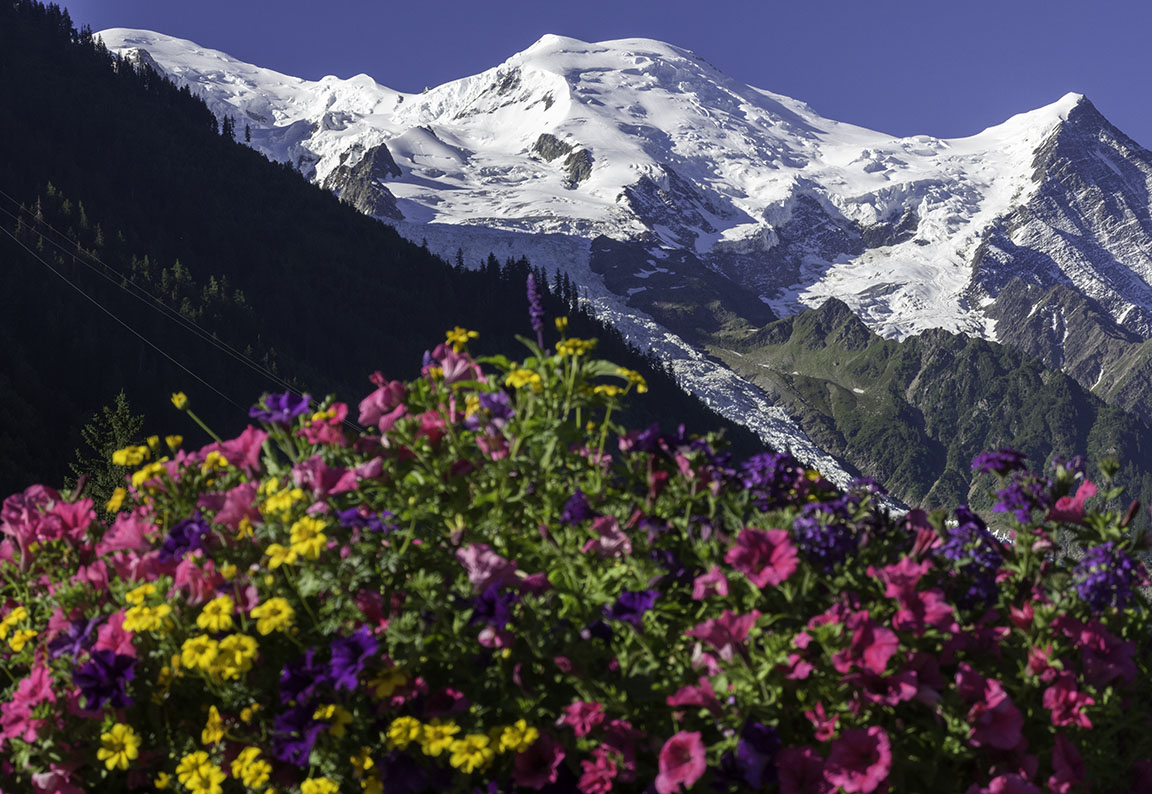
Troy’s 4 take home points regarding summer weather in the Alps:
1. Check a local forecast, but not too far in advance. Take it day by day. Often you’ll find links for good weather information on hotel or local tourist office websites. Local same-day forecasts are the best.
2. Bring all the gear on your trip. You may not need it, but if you do, you’ll be very thankful.
3. Don’t hesitate to break plans if the weather isn’t cooperating. Turn around if you need to, and don’t feel like you have to go out in bad weather. It’s your vacation after all and you can do whatever you want.
4. Don’t worry, and embrace what will be. Take the sun when you get it, but enjoy the mystery of a cloudy day, or the novelty of summer snow, or the drama of a thunderstorm. Above all, enjoy.

